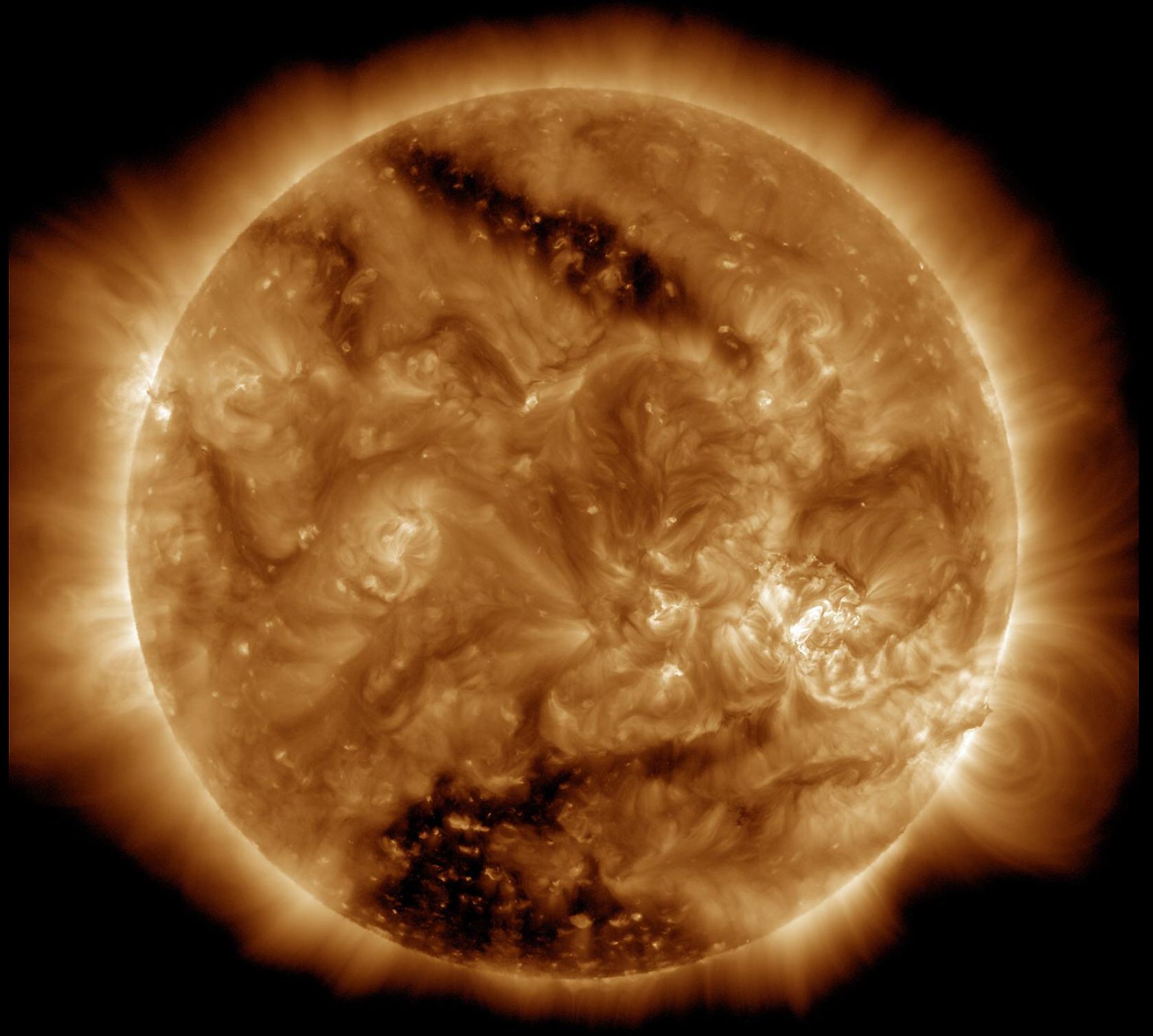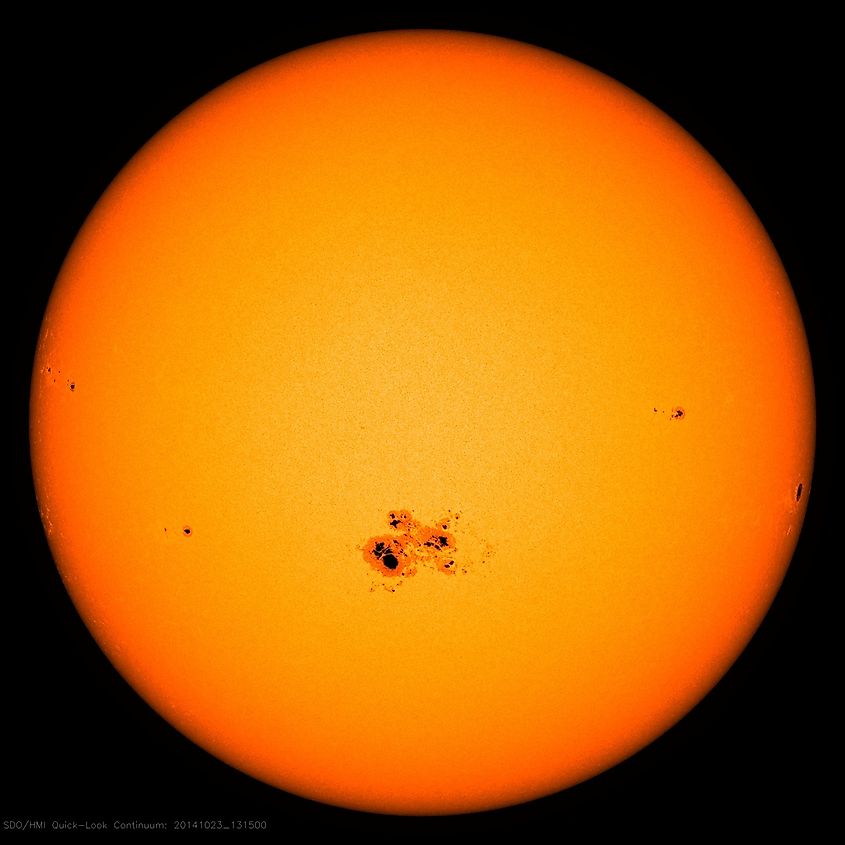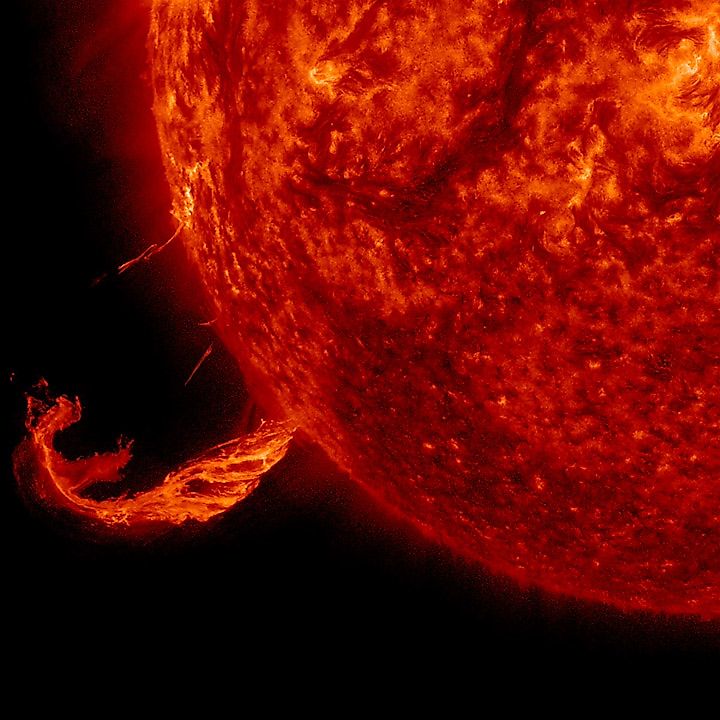
What Are Sunspots?
Sunspots are regions on the sun's surface that appear darker than surrounding areas. They appear darker than their surroundings because they are quite a bit cooler. The sun’s average temperature is about 9,941 degrees Fahrenheit (5,505 degrees Celcius), while sunspots are around 6,500 degrees Fahrenheit (3,593 degrees Celcius). Sunspots can be split into two parts: the umbra and the penumbra. The umbra is the dark portion at the center of the sunspot, while the penumbra is the lighter area directly surrounding the umbra. Sunspots vary in frequency depending on where the sun is within its 11-year solar cycle. More sunspots are visible during solar maximum while the reverse is true for the solar minimum.
How Are Sunspots Formed?

Astronomers are not certain as to how sunspots form. The leading theory accepted today was put forward by Horace Babcock in 1961 which states that the sun’s magnetic field forms sunspots. Imagine the magnetic field as rubber bands attached to the sun’s poles. Since the sun rotates faster at the equator than at the poles, the rubber bands would start twisting together near the equator. As they twist and become more entangled, the rubber bands will ‘snap’. The snapping of these magnetic fields causes what is known as an active region, and it is here where sunspots form. Depending on where the sun is in its 11-year solar cycle, sunspots can be found in slightly different places. During solar maximum, sunspots tend to be further away from the equator, whereas during solar minimum they tend to be close to the equator.
What Do Sunspots Do?

Sunspots themselves do not have a significant impact on Earth. However, sunspots are the source of solar flares and coronal mass ejections (CME), which do affect Earth. Solar flares are gigantic eruptions of electromagnetic radiation and coronal mass ejections are large eruptions of plasma and magnetic fields. Solar flares and CMEs can have side effects on Earth. As electromagnetic radiation reaches Earth, it charges the atmosphere. During the most intense solar flares, the aurora borealis (northern lights) and the aurora australis (southern lights) can be seen much further south or north than usual. In addition to increased aurora activity, solar flares can also cause blackouts. Reports of sparks flying from telegraph machines and powerlines are common during these events as the machines cease regular function. Increased solar activity can also decrease the lifetime of satellites due to the intense radiation.











